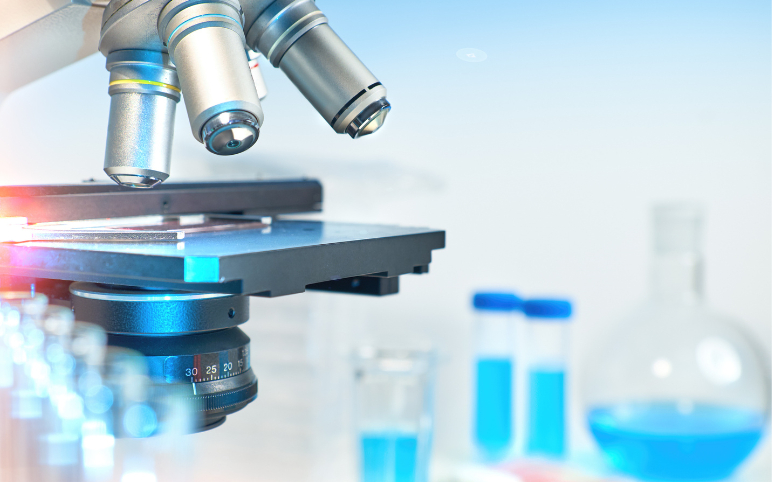
Sep 21, 2018
Cancer treatment methodologies are always evolving, and there cannot be any denying to the fact. In this uninterrupted pursuit, old formulas are sometimes used in new ways, arousing hopes for patients as well as commercial treatment providers.
A case in point is the usage of light, which has long been used to see cancer tumors; but many of us will find it hard to concede to the fact that light could be put to cancer treatment use too. Regardless of our take, it nevertheless is true. There has been untiring efforts among researchers to use laser for killing lung cancer cells. Laser is nothing but light, in coherent form.
Lung cancer is the second most common cancer among males as well as females. Statistical analysis on the global cancer incidence shows approximately 14 percent of all new cancers are lung cancers. According to the American Cancer Society, there will be about 234,030 new lung cancer cases in the United States during 2018, and about 154,050 deaths are expected to occur there due to lung cancer.
Click Here To Get the Article in PDF
According to the statistics available, most lung cancer diagnosed cases pertain to patients of more than 65 years of age; diagnosed patients younger than 45 years are lesser in number. On the survival front, there are more than 430,000 people, who were diagnosed with lung cancer at some point in their lives, alive today. Statistical analysis also shows that there are high chances of survival if the detection is done at the early stages, despite the serious prognosis of lung cancer.
The technique of using light in treating cancer is called as the Photo Dynamic Therapy (PDT), which is a procedure in which a specific chemical is injected into the patient’s bloodstream; and subsequently, the chemical is absorbed by all the body cells. But the chemical does not stay in the normal cells for long, except in the cancer cells, where the chemical resides for some time. Then, a laser beam is used to activate the chemical for killing the cancer cells. Encouraged by the initial positive results of the trials, researchers have been engaging themselves to improve the therapy and also to expand the therapy to other cancer forms.
Despite the optimistic outlook, some side effects of the PDT have also been reported in the guise of: cough, trouble in swallowing, stomach pain, painful breathing and shortness of breath. On the encouraging side, these side effects were found to be temporary.
Article in PDF

Sep 21, 2018
Cancer treatment methodologies are always evolving, and there cannot be any denying to the fact. In this uninterrupted pursuit, old formulas are sometimes used in new ways, arousing hopes for patients as well as commercial treatment providers.
A case in point is the usage of light, which has long been used to see cancer tumors; but many of us will find it hard to concede to the fact that light could be put to cancer treatment use too. Regardless of our take, it nevertheless is true. There has been untiring efforts among researchers to use laser for killing lung cancer cells. Laser is nothing but light, in coherent form.
Lung cancer is the second most common cancer among males as well as females. Statistical analysis on the global cancer incidence shows approximately 14 percent of all new cancers are lung cancers. According to the American Cancer Society, there will be about 234,030 new lung cancer cases in the United States during 2018, and about 154,050 deaths are expected to occur there due to lung cancer.
According to the statistics available, most lung cancer diagnosed cases pertain to patients of more than 65 years of age; diagnosed patients younger than 45 years are lesser in number. On the survival front, there are more than 430,000 people, who were diagnosed with lung cancer at some point in their lives, alive today. Statistical analysis also shows that there are high chances of survival if the detection is done at the early stages, despite the serious prognosis of lung cancer.
The technique of using light in treating cancer is called as the Photo Dynamic Therapy (PDT), which is a procedure in which a specific chemical is injected into the patient’s bloodstream; and subsequently, the chemical is absorbed by all the body cells. But the chemical does not stay in the normal cells for long, except in the cancer cells, where the chemical resides for some time. Then, a laser beam is used to activate the chemical for killing the cancer cells. Encouraged by the initial positive results of the trials, researchers have been engaging themselves to improve the therapy and also to expand the therapy to other cancer forms.
Despite the optimistic outlook, some side effects of the PDT have also been reported in the guise of: cough, trouble in swallowing, stomach pain, painful breathing and shortness of breath. On the encouraging side, these side effects were found to be temporary.
